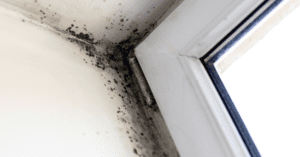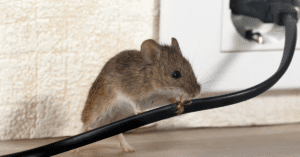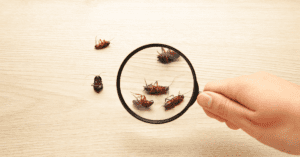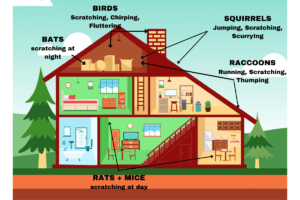
The Relationship Between Pests and Mold in Homes
Discover the hidden link between pests and mold in homes. Learn how they coexist and how to prevent these health hazards effectively.

Rats thrive in urban, suburban, and rural areas, often found in sewers, basements, and attics.
Rats are omnivorous, eating grains, fruits, vegetables, meats, and scavenging in human habitats for food.
Rats reproduce rapidly, producing multiple litters annually, reaching sexual maturity within five weeks, living up to three years.
In Canada, the most common types of rats include the Norway rat (Rattus norvegicus) and the roof rat (Rattus rattus). Norway rats are larger, preferring basements, sewers, and lower levels of buildings, while roof rats are sleeker, often inhabiting attics and trees. Both species are highly adaptable, making them significant pests in urban and suburban areas where they seek out food, water, and shelter near human habitats.
Rats cause numerous problems, including contaminating food supplies with droppings and urine, which can transmit diseases like leptospirosis, hantavirus, and salmonella. They gnaw on electrical wiring, insulation, and structural components, creating fire hazards and costly damage. Rats can also spread parasites like fleas, lice, and mites, leading to additional health concerns. Their presence often results in significant psychological distress and hygiene issues, especially in residential areas and businesses.
Rats in Canada can be identified by their robust bodies, short limbs, and long, scaly tails. Norway rats are typically brown or grey with shorter tails relative to their body length. Roof rats are sleeker with black or brown fur and longer tails. Both types have large, continuously growing incisors for gnawing. Identifying rats involves observing their size, coloration, nesting habits, droppings, and the gnawing damage they cause around homes.
Rats pose significant health and safety risks due to their ability to spread diseases and cause structural damage. Infestations can lead to contaminated food supplies, fire hazards from chewed wiring, and significant psychological distress. Preventive measures, such as sealing entry points and maintaining cleanliness, are crucial. If an infestation is suspected, prompt action and professional pest control services are necessary to mitigate damage, eliminate the problem effectively, and prevent future infestations.
Rats invade homes seeking food, water, and shelter, especially during colder months. They enter through cracks, gaps, and openings around buildings, taking advantage of poor sanitation and cluttered areas. Homes with easily accessible food sources, such as improperly stored groceries, pet food, and trash, attract rats. Inadequate sealing of entry points and the presence of clutter create ideal conditions for rats to thrive and reproduce, leading to difficult-to-control infestations.
Preventing rats involves sealing cracks and gaps around windows, doors, and foundations to block entry points. Store food in airtight containers and clean up spills and crumbs promptly. Regularly reduce clutter to eliminate hiding spots and use traps and bait stations to monitor and control populations. Conduct regular inspections and maintenance to identify and address potential entry points and signs of rat activity, ensuring a rat-free environment. Keeping outdoor areas clean and free of debris also helps.
Pestcheck’s rat inspection involves a detailed examination of your home, focusing on areas like basements, attics, and kitchens. Our experts meticulously document all evidence of rat activity, including droppings, nests, and entry points. This comprehensive assessment allows us to fully understand the extent of the infestation and develop a precise, targeted treatment plan to eliminate rats and protect your property.
Pestcheck’s rat control strategy uses eco-friendly methods, such as traps and exclusion techniques, to target both visible and hidden rats. We address key infestation sites and seal potential entry points to ensure thorough eradication. This comprehensive approach not only removes current rats but also establishes long-term barriers to prevent future infestations, keeping your home safe and rat-free.
Pestcheck’s follow-up services include regular inspections to monitor treated areas and reinforce protective measures. We continuously check for signs of new rat activity and adapt our methods to seasonal changes and ongoing threats. This proactive approach ensures your home remains rat-free year-round, providing lasting protection, peace of mind, and a secure living environment.
This question is the most popular FAQ: Rats question.
Mice are much smaller than rats. Mice are about 2 to 3 1/2 inches in length – plus another 3 to 4 inches of tail. The most common rats in Canada are the Norway rat and the roof rat. They will be about 14 to 16 inches in length.
Rats prefer dark, dank places to hide and nest, so they avoid areas that are too exposed or unprotected. They are also foragers, looking for tiny crumbs or pools of moisture to snag a nibble or swig from. As such, making your home less attractive to rats looking for a new place to infest will help make your property loathsome enough to avoid a rodent infestation.
Look for rat droppings. They are 1/4 to 1/2 inch in length, capsule shaped, with blunt ends and are usually a shiny black (though variable according to diet). Look for burrows in the ground around buildings, in gardens or near garbage containers. Burrows are round to oval shape and range in size.
Rats move inside for three main reasons: food, water, and shelter. As the weather chills or grows wet, rats must seek shelter from the elements. But they can be driven to a property at any time of the year if they detect easy sources of food. Improper food and trash storage can provide a treasure trove for foraging rodents. Even the smallest crumbs and spills left in hard-to-reach places can provide enough sustenance to encourage pests to move in.
Basic property maintenance and housekeeping can put you ahead on pest prevention. But if an infestation is already happening it’s best to turn to the professionals. At Pestcheck Pest Control, we work with your schedule and budget to quickly and effectively get rid of rats. Our trained experts will also advise you on ways they can pest-proof their home or business. So, what are you waiting for? Contact Pestcheck Pest Control today to get started on proven rat control.
Check out our blogs and articles to learn more about keeping your home pest-free and your family and pets safe! We’re sharing our expert advice and latest news from behind-the-scenes.

Discover the hidden link between pests and mold in homes. Learn how they coexist and how to prevent these health hazards effectively.

Protect your property from rodents chewing on electrical wiring. Discover risks, signs, and effective prevention tips.

In the food service industry, maintaining high standards of hygiene and food safety is paramount to ensuring customer satisfaction and preventing health risks. However, one significant challenge that establishments face

As our loved ones transition into their golden years, our foremost concern revolves around ensuring their health and comfort. Yet, within the nurturing ambiance of senior living spaces, an often-overlooked

In the life of the modern homeowner, the possibility of a pest emergency is a crisis that often goes overlooked. Pests such as rodents, insects, and various other critters can

You hear noise in the attic. It’s squeaking, scratching and chewing.

You’ve ticked off all items on your vehicle maintenance checklist. However, rodents making a home in your car isn’t on that list, is it? Scary but true, mice, rats, and

Did you know that your child’s school or playground could house various types of pests? These unwelcome guests can present a range of health risks to children and may even

Pest infestations often bring to mind images of messy households, but the truth is no premises are exempt, including sparkling clean offices. Pest invasion poses not only health risks but